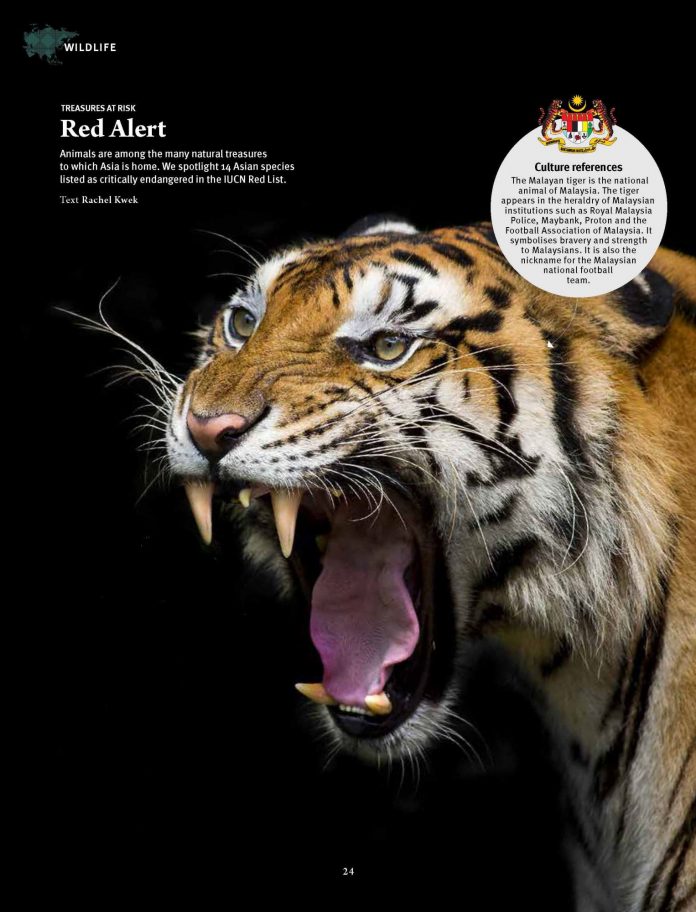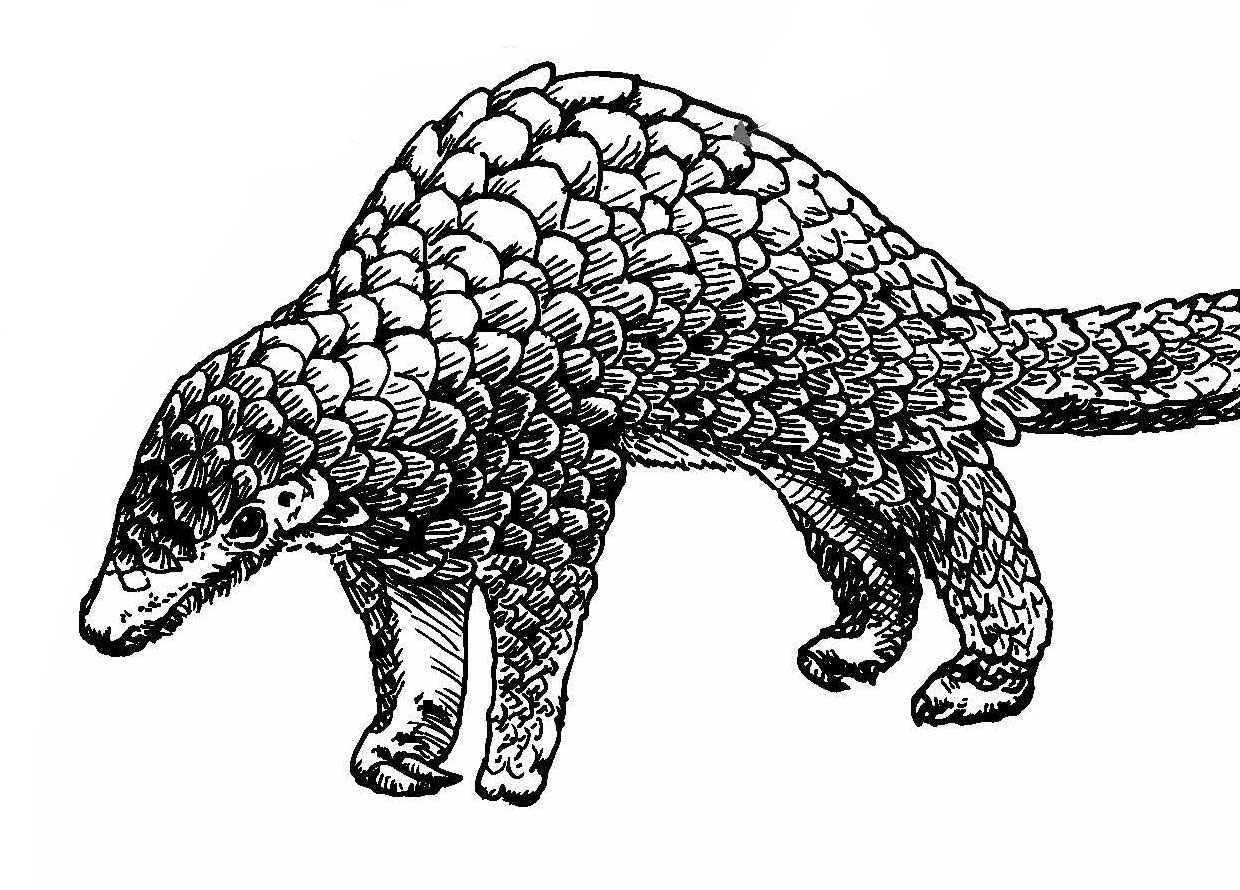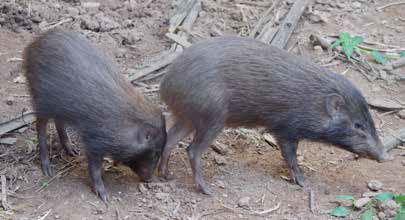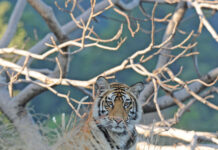Animals are among the many natural treasures to which Asia is home. We spotlight the Asian species listed as critically endangered in the IUCN Red List.
Malayan Tiger
Panthera tigris jacksoni
Status: Critically Endangered
Region: Malaysia (Peninsular Malaysia)
Population remaining: 250 – 340
Classified as Indochinese tigers until DNA testing in 2004 showed them to be a separate subspecies, the Malayan tiger’s Latin name —Panthera tigris jacksoni— honours Peter Jackson, the famous tiger conservationist. Wild Malayan tigers are found only in the forests on the Malay Peninsula and on the southern tip of Thailand. The destruction of forests for timber, commercial plantations and road development is largely responsible for the tigers’ loss of habitat, which has declined from about 98,8000km² before the 1970s to about 44,700km² in 2014. Trade of tiger parts for medicine or other uses is also a threat to Malayan tigers. Organisations such as Panthera and WWF have supported the species’ conservation through data collection and education.
Chinese Pangolin
Manis pentadactyla
Status: Critically Endangered
Region: Bhutan, China, Hong Kong, India, Laos, Myanmar, Nepal, Taiwan, China, Thailand and Vietnam
Population remaining: Decreasing
Pangolins are among the most traded wild animal in the world with about 100,000 of them hunted for sale each year. Its meat is considered a delicacy in China, Vietnam and other parts of Asia and researchers have warned that the Chinese pangolin could be eaten to the point of extinction. Illegal poaching and trade persists despite legislation such as the ban on the export of Asian pangolins removed from the wild for commercial purposes under the Convention of International Trade in Endangered Species of Wild Fauna and Flora (CITES), which has been in place since 2000. All eight pangolin species are classified from Vulnerable to Critically Endangered by IUCN.
Pygmy Hog
Porcula salvania
Status: Critically Endangered
Region: Bhutan and Assam (India)
Population remaining: 200 – 500
Pygmy hogs are very small pigs that are about 20 to 30cm tall and 55 to 71cm long. They inhabit dense grasslands and feed on tubers, roots, insects, rodents and small reptiles. Previously found in India, Nepal and Bhutan, the Indian native is now only found in a few locations in northwestern Assam, India. The main threats to the species are the loss and degradation of habitat due to logging, livestock grazing, human settlements, agricultural encroachment and dry-season burning.
To read the rest of this article, check out our latest issue of Asian Geographic No.136 Issue 3/2019 here or download a digital copy here













